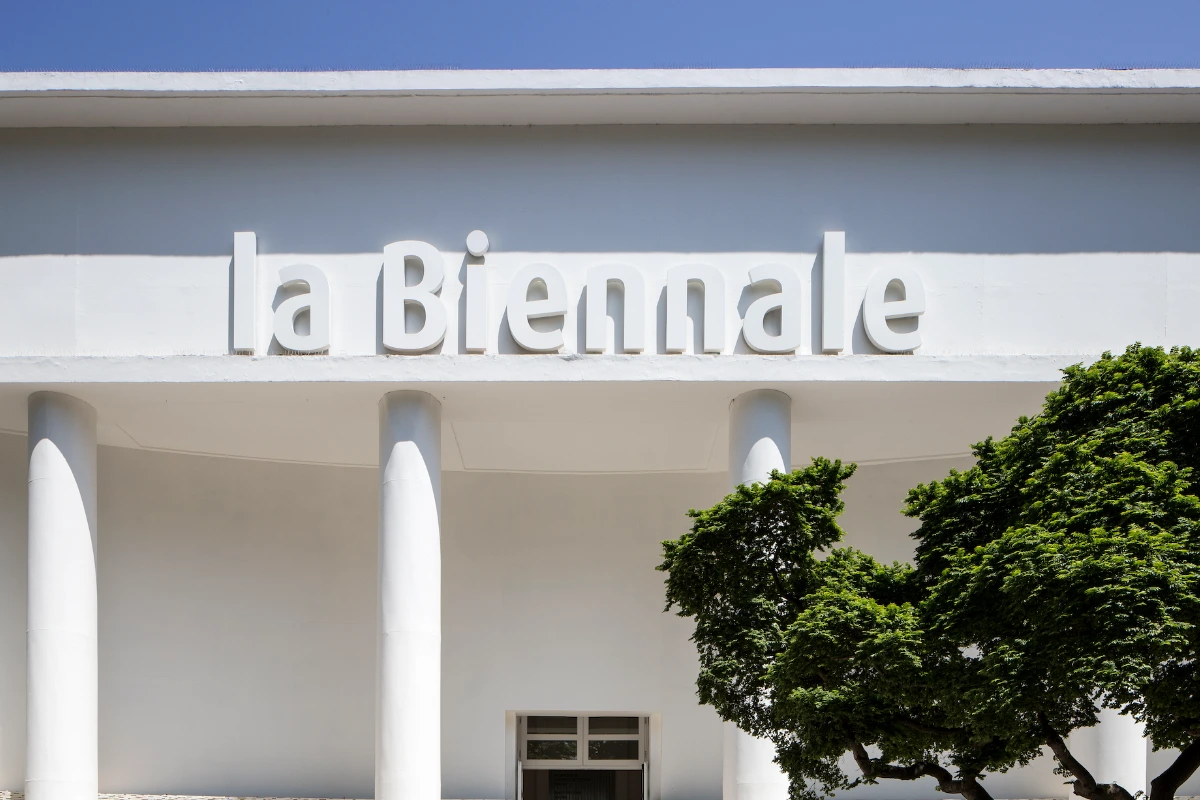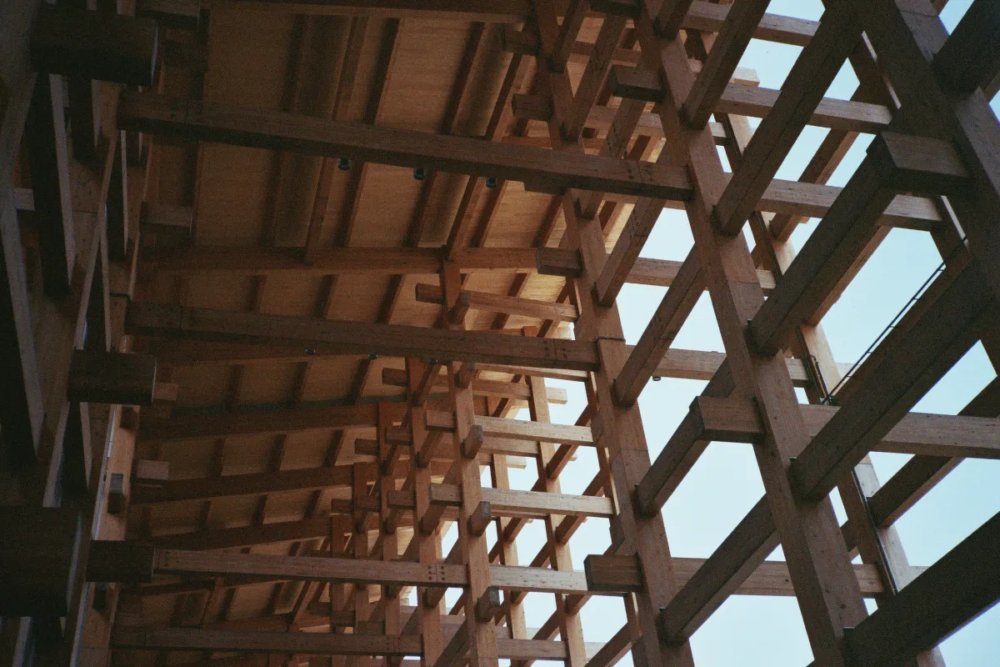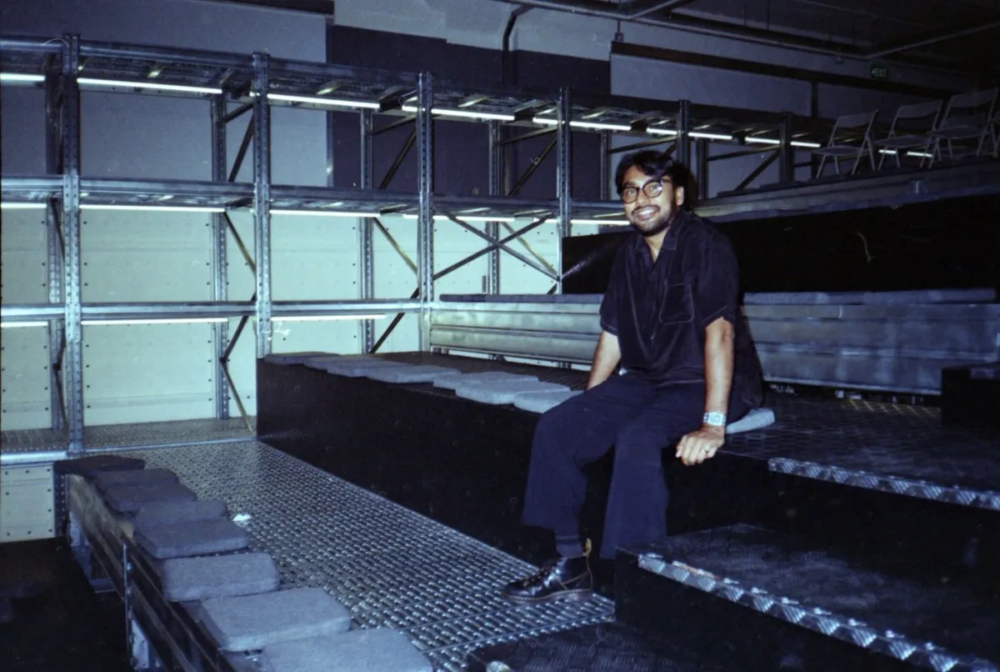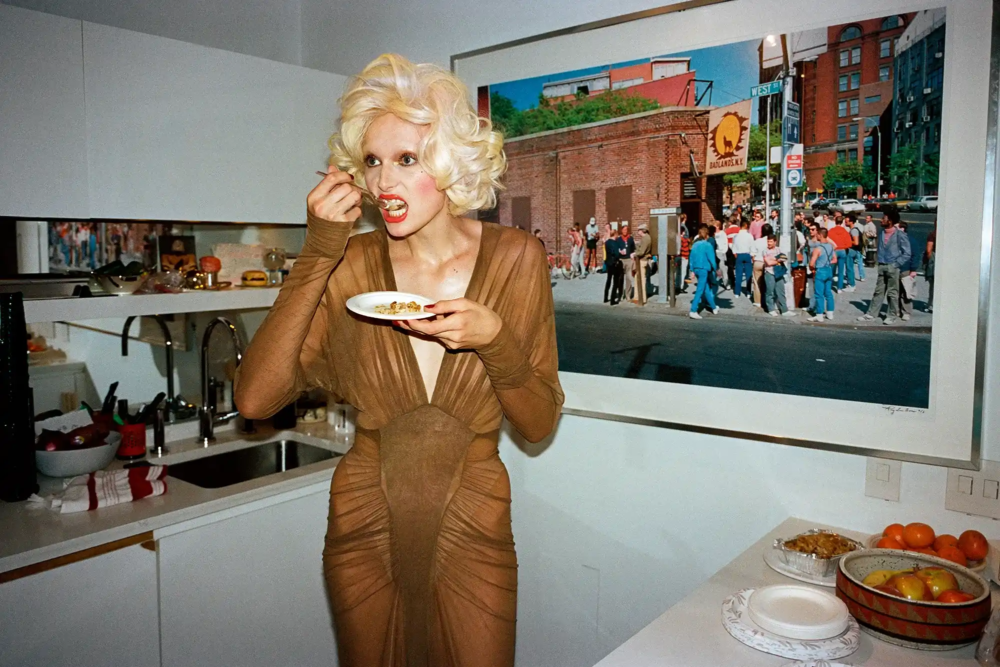
Trees Are the Patrons of Architecture: Inside Carlo Ratti’s 2025 Biennale
“Reforestation has to begin in a concrete, local way—tree by tree, sidewalk by sidewalk. It’s one of the few effective answers to overheated cities.” An interview with Carlo Ratti about the 2025 Venice Architecture Biennale
What does it mean to be culturally sustainable? Turning research into a tangible tool, according to Carlo Ratti
Carlo Ratti: The word sustainability has lost some of its punch—worn thin by overuse and too often handled superficially. We now have to get precise again. It’s no longer enough to declare we are “sustainable”: we must ask how we are sustainable, where, for whom, and—above all—according to which metrics.
Data are changing the way science itself is done, making even the social sciences more quantitative—today many are called “computational.” This data revolution can have a major impact on sustainability: it helps us define the term more clearly, measure it, and therefore make it truly actionable. At the MIT Senseable City Lab, where I’ve worked for twenty years, we follow a pragmatic, inquisitive approach: we read cities through data with the aim of turning research into concrete tools.
One modest example is Treepedia, a project that uses AI techniques to quantify urban tree-canopy cover. The results generate academic papers, but they’re also publicly accessible at the neighborhood scale. In Paris and Boston alike, the data have guided new plantings—not on the basis of abstract hunches, but of real evidence—with the goal of achieving a fairer distribution of urban greenery.
Studying Cities That Feel: Carlo Ratti and the 19th International Architecture Exhibition, La Biennale di Venezia
FJC: Together with Prof. Antoine Picon, your book Atlas of the Senseable City (Yale University Press, 2023) puts forward an idea that moves beyond the “smart city,” a term architects and planners have repeated for over a decade. You speak instead of a city that is sensitive and capable of sensing. For the 19th Architecture Biennale you treat Venice as a laboratory. Can the same mapping method be applied to the lagoon ecosystem—an atlas of emotions or a technology-driven atlas?
Carlo Ratti: The Senseable City Lab was founded in 2004 on the intuition that a city should not only be smart but senseable—able to sense, perceive, and respond. In Atlas of the Senseable City we argue that cities are not static containers but evolving systems, made smarter and more sensitive by ubiquitous data interacting with physical space.
That approach fits any urban context—Venice included. Indeed, Venice has always lived in tight relation with the forces around it, a fragile, ancient organism attuned to tides, seasons, and human activity.
Some Biennale projects embrace this logic: one maps algal blooms and lagoon salinity, another records the marshland soundscape, another gathers oral histories otherwise at risk of vanishing. All are forms of listening—technological sensors and human sensors together composing a new reading of space. Yet the Biennale goes further, exploring the idea of augmented intelligence that is not only artificial but also natural and collective.
Toward an Interdisciplinary Biennale: the Terms & Conditions Project
FJC: Interdisciplinarity is a hallmark of your curatorial vision. Take Terms & Conditions, born from climate scientists Sonia Seneviratne and David Bresch, the artist Michelangelo Pistoletto’s Cittadellarte Foundation, German climate-engineering firm Transsolar, and environmental historian Daniel A. Barber. How did that collaboration unfold?
Carlo Ratti: This Biennale stems from a radical yet simple idea: to face the challenges of our time—climate adaptation above all—we must activate every available intelligence. Not just architects, but engineers, climate scientists, artists, philosophers, designers, farmers, coders. Cities—and the world—are complex systems that demand equally complex answers built through cross-pollination.
Terms & Conditions embodies that. Filling the entrance of the Corderie, the floor is flooded and the air overheated—an immersive preview of Venice’s possible climate future. The project doesn’t end there: the research team produced a substantial scientific paper analyzing future lagoon scenarios. It leaves Venice not only memories but foresight.
Generations in Dialogue: A Multigenerational Biennale
FJC: Is architecture itself slow to embrace the Biennale’s values, or is a generation of architects detached from them?
Carlo Ratti: I don’t see it as generational. This year over 350 participants work in multigenerational teams—a diversity of ages that I view as a strength (and note: more than 375 participants collaborate across borders, and over 250 in women-led teams inside a traditionally male field).
The issue is less the architects than the system they operate in: regulations, economics, and production often reward repetition, not risk. A Biennale can act as a catalyst—as others have in the past. For instance, the Manifesto on Adaptation we signed in Madrid with Spanish Prime Minister Pedro Sánchez gathered over 250 Biennale participants’ signatures within hours. Symbolic, yes, but also a statement of intent: a desire to place architecture back at the center.
Architecture and Politics: Indicating Directions, Opening Scenarios
FJC: Douglas Murphy writes that only governments or major capital can afford architecture, meaning it can never be apolitical. How political is your work?
Carlo Ratti: Architecture is a political act. Every built intervention shapes collective life—behaviors, relationships, the environment. There are two ways architecture can relate to politics: one healthy, one unhealthy.
The unhealthy way is architecture as megaphone for an existing political message—think Speer under Nazism, or, in a very different context, Gregotti in late-20th-century socialist Italy. We must stay clear of that. Instead, architecture should be an input to the political process: it can suggest directions, open scenarios, provoke alternatives, then leave choices to citizens. That’s why I favor open, feedback-driven design systems.
For the 2025 Biennale the political message is straightforward: we need multiple intelligences to face our era’s challenges—adapting to a changing planet.
A Circular-Economy Manifesto: Cutting Waste from Temporary Events
FJC: You’ve written a Circular Economy Manifesto with Arup and the Ellen MacArthur Foundation—seven points urging architects and innovators to radically rethink their environmental approach.
Carlo Ratti: Expos, Olympics, Biennales are unique test beds—free of permanence, fertile for experimentation. Their ephemerality has birthed radical innovations: Paxton’s Crystal Palace (1851) or the Eiffel Tower (1889), both temporary structures that changed modern architecture.
At CRA we’ve long gravitated to such events: from the Digital Water Pavilion at Expo Zaragoza 2008 (named a TIME Best Invention) to themed pavilions at Milan 2015 and Italy’s Pavilion at Dubai 2020. We’re now involved in Expo Osaka and in designing the Olympic torches for Milano-Cortina 2026.
But one problem persists: the massive waste left by temporary events. Entire buildings land in dumps within weeks. How do we design an event where nothing becomes waste when the lights go out?
Hence the Circularity Manifesto, an open invitation to rethink how we build, choose materials, and design each intervention’s full life cycle.
Choosing Materials: Favoring Natural Raw Matter
FJC: Material choice recurs in the Manifesto. Which materials do you favor?
Carlo Ratti: I’m drawn to materials that follow nature’s logic: coming from a previous life and capable of regenerating into the next. We’ve used spent coffee grounds for a Lavazza counter, tomato-waste panels for the new Mutti cafeteria, and at Milan’s Botanical Garden built the Circular Garden—the world’s largest mycelium structure, grown like a plant in weeks and composted back into soil without trace.
At the Biennale we follow the same principle: almost no plasterboard; most installations use panels from Saviola Group, recycled from old furniture. After the show those panels will be ground up again and reborn as new boards—so the Biennale will live on in kitchens and wardrobes worldwide.
Urban Regeneration Through Forestation: Putting Trees at the Center
FJC: Taking The Greenary as one example, what role do trees play in your building designs? How urgent is urban reforestation through architecture?
Carlo Ratti: We’re fascinated by the boundary between natural and artificial. Sometimes that relationship is a single tree—as in The Greenary, where a ten-meter ficus stands at the home’s core. The house didn’t insert the tree; rather, it grew around it. Spaces, light, and structure respond to the tree’s needs. In that sense, the tree became the true client.
Elsewhere we work with larger natural systems: the Trussardi terrace in Milan’s Piazza della Scala, designed with botanist Patrick Blanc, is a garden suspended five meters above ground on a glass structure. In refurbishing Niemeyer’s Mondadori headquarters we treated greenery as infrastructure—cooling, air-purifying, season-modulating elements. Even our Turin studio’s garden functions as a work space for much of the year, an active part of the office.
Urban reforestation—often invoked globally—must start concretely and locally: tree by tree, sidewalk by sidewalk. It’s among the few effective solutions we have today against urban overheating and heat-island effects. It also reconnects us daily to the nature that sustains us.
Natural Raw Materials at the Biennale: Elephant Dung Bricks from Thai Sanctuaries
FJC: Projects such as Boonserm Premthada’s Elephant Chapel—making bricks from elephant dung—seem experimental. Can they realistically fit into a broader construction system?
Carlo Ratti: Premthada works closely with Thai elephant sanctuaries. His simple, potent insight: elephant dung, rich in fiber, can be mixed with clay to yield breathable, lightweight, strong bricks.
Will this scale up? That depends on many factors—technical, regulatory, economic—but we need the courage to try. Nature proceeds by trial and error.
That’s the Biennale’s purpose too: not a catalog of ready-made solutions but a laboratory of possibilities. Some ideas will enter real processes; others will stay provocations—and provocations matter, because they push the horizon of what we think possible.
The Inevitability of Public Space: Architecture Must Build Relationships
FJC: You work extensively in the United States. How do you respond to a culture that views space as a privatizable refuge?
Ratti:
Physical gathering in the same place is an antidote to the polarization we often see online. Public space has a unique quality: inevitability—it brings together different people with different ideas, like the Athenian agora. Online platforms, by contrast, trap us in echo chambers.
This applies outdoors and indoors. At Milan’s MEET Cultural Center we used architecture to foster connections among visitors: the central stair is a “vertical piazza,” a circulation element that sparks encounters. We’ve explored that idea in various projects because we believe architecture’s main job is to build relationships.
Reading the Universe’s Intelligences to Aspire to Beauty—not Only Utility
FJC: Your Biennale is structured around three forms of intelligence—natural, artificial, collective. Can these intelligences still create architecture that reaches for Beauty and elevates the human spirit, or is there only room for necessity?
Carlo Ratti: Like Galileo, I think philosophy is written in that grand book—the universe—that lies continually open before our eyes. Elevation must start from it and from the many intelligences it contains—natural, artificial, collective.
Carlo Ratti—Biographical Profile
Architect and engineer Carlo Ratti teaches at MIT and at Politecnico di Milano. He directs the Senseable City Lab and co-founded the design and innovation practice CRA-Carlo Ratti Associati (Turin, New York, London).
A graduate of Politecnico di Torino and École des Ponts in Paris, he earned an MPhil and PhD in architecture at the University of Cambridge, completing his doctorate as a Fulbright Scholar at MIT.
One of the ten most-cited scholars worldwide in urban planning, he has co-authored 750+ scientific works, including Atlas of the Senseable City (with Antoine Picon, Yale). A TED speaker, he writes opinion pieces for The New York Times, Financial Times, The Guardian, Project Syndicate, Le Monde, Süddeutsche Zeitung, Corriere della Sera, La Repubblica, El Pais. He co-chairs the World Economic Forum’s Global Future Council on Cities and Urbanization.
Ratti has served as a director at Moscow’s Strelka Institute, curator of Berlin’s BMW Guggenheim Pavilion, and curator of the Future Food District at Expo Milan 2015. He was chief curator of the 2019 Shenzhen Biennale of Urbanism/Architecture, co-curator of the 2021 Porto Design Biennale, and creative mediator for urban vision at the European nomadic Biennale Manifesta 14 in Pristina (2022).
His work has been exhibited at MoMA New York, multiple Venice Architecture Biennales, Barcelona’s Design Museum, London’s Science Museum, and Rome’s MAXXI.
He is curator of “Intelligences: Natural. Artificial. Collective.”, the 19th International Architecture Exhibition of La Biennale di Venezia, opening to the public on 10 May 2025
Federico Jonathan Cusin








